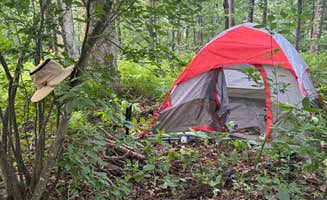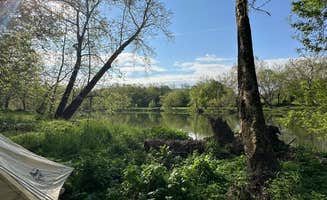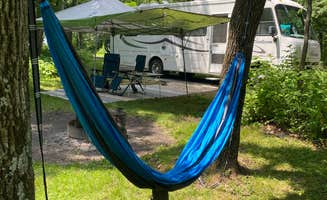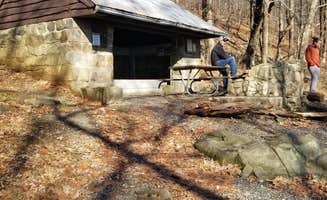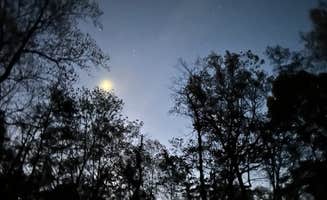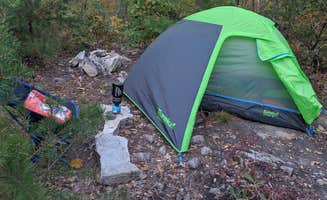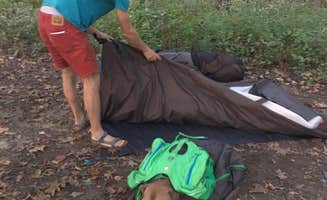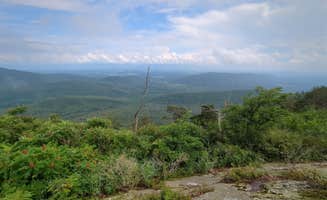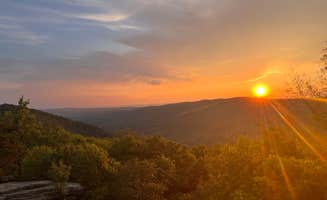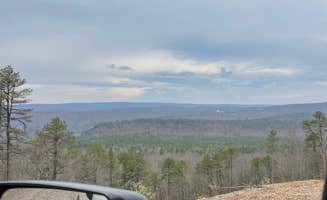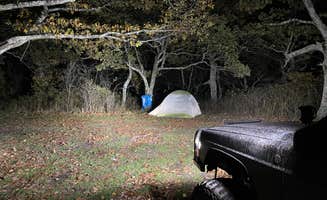Dispersed camping near Stanley, Virginia offers numerous primitive sites in George Washington National Forest and around Shenandoah National Park. The area sits at elevations between 700-4,000 feet with weather patterns that can shift quickly, especially in mountain zones. Fall camping brings temperature drops to the 30s overnight, requiring proper cold-weather gear even when daytime temperatures remain mild.
What to do
Hiking to waterfalls: Several trails near Switzer Lake Dispersed Camping provide access to seasonal water features. "I've camped here probably 12 times over the past 2 years and I seem to always find another awesome spot every time I go. There is a huge variety of spots, starting from huge ones right on the lake to more secluded, smaller spots deeper in the woods along the creek," notes one camper.
Fishing opportunities: Anglers can try their luck at various waterways. A visitor to Switzer Lake mentions, "The fishing is decent, and we have caught some trout there in the past. There is a boat ramp at the lake, but only electric motors and paddle boats are allowed."
Wildlife viewing: The forests around Stanley host diverse wildlife. At Veach Gap - GWNF - Backpacking Site, a camper reports, "Breathtaking views of the Shenandoah River and surrounding mountains. Very much worth the 4 mile hike up to the site. 1,200ft elevation difference from the trailhead to the site."
What campers like
Riverside camping: The waterfront access at many sites draws campers seeking water proximity. At South Fork Shenandoah River, one visitor shared, "The site at the end of the road is beautiful. We stayed right at the end of the road, since we have a 30 foot RV, but there are sites you can walk to all the way down the river."
Secluded spots: Many primitive camping areas near Stanley offer privacy from neighboring sites. "There are about 5 campsites, one was reclaimed by Mother Nature. But you can still find a bench right in front of a fire pit," notes a camper regarding the South Fork area.
Dark skies: Remote locations mean reduced light pollution for stargazing. Though one camper did caution about South Fork: "Airport is too close so plenty of light pollution to block out the true beauty of the night sky," suggesting finding spots deeper in the forest for optimal viewing.
What you should know
Bear activity: Black bears are common throughout the region. A camper at Little Fort Campground advises, "This is a nice little spot. You select a campsite by flipping a washer on a hook on the board from green to red. Flip it back when you leave. The campsites have a fire ring, a picnic table, and a flat area to pitch a tent."
Cell service limitations: Most primitive camping areas have limited or no connectivity. At Little Fort, "On this app it says T-Mobile access, I'm a T-Mobile customer, no reception at all but drive 5 minutes back down the mountain and you're good to go."
Weather preparedness: Mountain weather changes rapidly. One Switzer Lake visitor recommends, "Duration of Stay: Oct 16-18, 2020. Average Daily Temp: 61. Average Evening Temp: 30." This substantial temperature swing is common in the region.
Tips for camping with families
Easier access sites: Some primitive sites offer better family access than others. At Crisman Hollow Road Camp, families appreciate that it's "A bit dirty but awesome spot near a creek."
Wildlife education opportunities: The abundant wildlife provides learning opportunities. One visitor noted, "It a quiet area with many spots on right on the water. There was one really nice hiking trail by the bridge."
Site selection strategy: Arrive early to secure suitable family sites. "The sites were fairly decent size but you really have to drive way in to get to them," notes a visitor to Switzer Lake, suggesting families allow extra time for site selection.
Tips from RVers
Road conditions: Access roads to primitive camping vary significantly in quality. "The road to get to the camp site from Wardensville was in excellent condition all the way to the camp site," reports a visitor to Wolf Gap Recreation Area.
RV-suitable sites: Not all dispersed areas accommodate larger vehicles. Wolf Gap offers more structured options: "Most sites have a paved parking platform and then a second tier for the camp site. All sites are quite large and include picnic tables, fire rings and large tent platforms."
Leveling challenges: Many primitive sites require leveling equipment. "Many of the car parking pads are not level. But the tent pads appear to be," notes another Wolf Gap visitor, suggesting RVers bring proper leveling gear.


